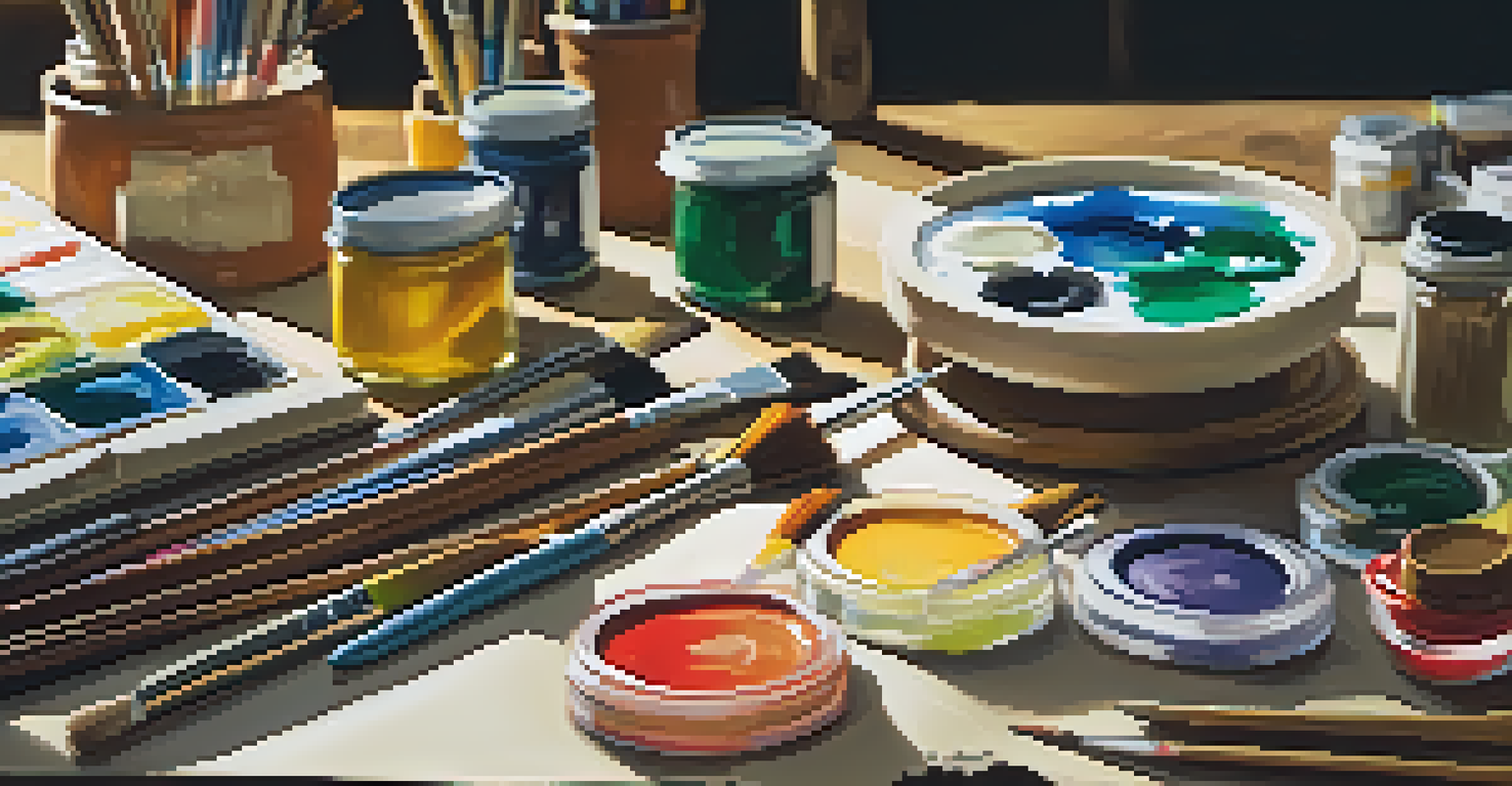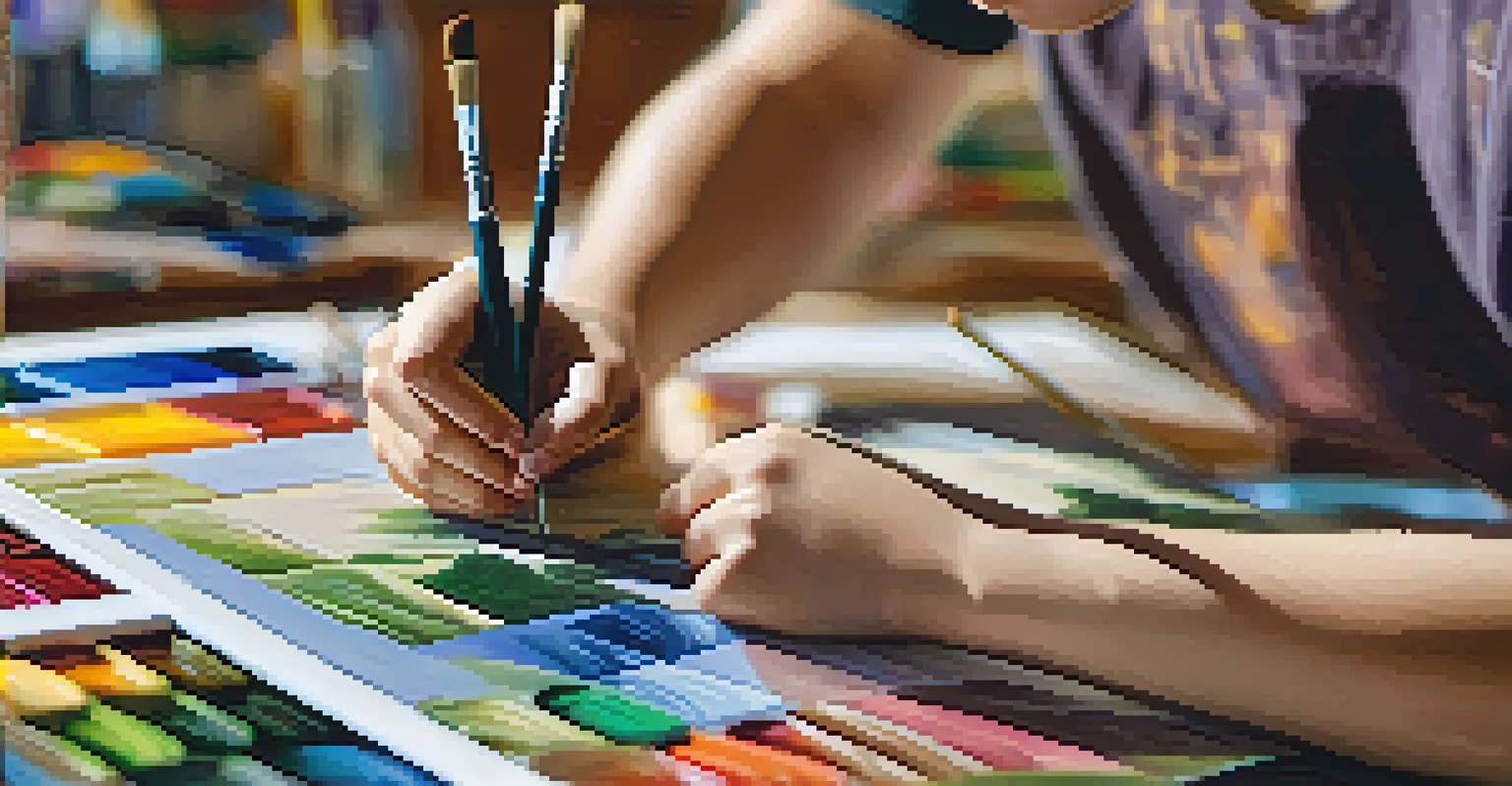Fostering Critical Thinking Through Art Projects in Schools

Understanding Critical Thinking in Education
Critical thinking is the ability to analyze, evaluate, and synthesize information effectively. In education, it empowers students to think independently and make informed decisions. By incorporating art projects, schools can create a dynamic environment that nurtures these skills.
Every artist was first an amateur.
Art encourages students to express their thoughts and feelings, prompting them to analyze their choices and the messages they convey. This process fosters deeper understanding, as learners must consider various perspectives and the reasoning behind their artistic decisions. Ultimately, critical thinking becomes a natural part of their creative journey.
Additionally, critical thinking isn't just about analysis; it's also about creativity and innovation. Art projects provide a platform for students to experiment and take risks, which are essential components of critical thinking. This blend of creativity and analysis cultivates a well-rounded thinker.
The Role of Art Projects in Schools
Art projects are more than just a way for students to express themselves; they serve as powerful learning tools. Through various mediums—like painting, sculpting, or digital art—students engage with concepts in unique ways. This hands-on approach makes learning more relatable and memorable.

Moreover, art projects often require collaboration, encouraging students to communicate and share ideas. This interaction helps them develop social skills while also challenging their critical thinking as they negotiate differing opinions and approaches. It’s a win-win situation where creativity and teamwork intersect.
Art Enhances Critical Thinking Skills
Integrating art projects in education fosters critical thinking by encouraging students to analyze, evaluate, and create.
In essence, art projects can transform the classroom experience. They invite students to explore complex themes and questions, allowing them to delve into subjects in a way that traditional methods may not facilitate, thus enhancing their overall educational experience.
Benefits of Integrating Art into Critical Thinking
Integrating art into education has numerous benefits that extend beyond creativity. When students engage in artistic activities, they develop problem-solving skills as they navigate the challenges of creating. For example, figuring out how to represent an abstract idea visually requires critical thought and innovation.
Art is not freedom from discipline, but disciplined freedom.
Additionally, art projects can help improve students' emotional intelligence. By expressing themselves through art, they learn to understand their emotions and those of others, enhancing empathy—a crucial aspect of critical thinking. This emotional connection can lead to deeper discussions and reflections in the classroom.
Furthermore, the process of critiquing art fosters analytical skills. When students analyze their own work or that of their peers, they learn to articulate their thoughts and provide constructive feedback. This practice not only sharpens their critical thinking but also builds a supportive learning community.
Implementing Art Projects in the Curriculum
To effectively implement art projects in schools, educators must align them with curriculum goals. By integrating art with subjects like science, history, or literature, teachers can create interdisciplinary projects that enrich students' learning experiences. For example, a project might involve creating a visual representation of a historical event.
It’s also important to provide students with the necessary resources and guidance. Teachers can introduce various artistic techniques while encouraging students to find their individual styles. This balance of instruction and freedom fosters both creativity and critical thinking.
Collaboration Boosts Learning
Art projects promote teamwork and communication, allowing students to negotiate ideas and develop social skills.
Moreover, incorporating technology into art projects can further enhance the learning experience. Digital art tools allow students to explore new mediums and techniques, encouraging them to think critically about their choices and the impact of their work.
Overcoming Challenges in Art Education
While integrating art into education offers many benefits, challenges can arise. One common issue is the perception that art is a less important subject compared to core subjects like math and science. Educators must advocate for the value of art in fostering critical thinking and creativity.
Another challenge is the limited resources or funding for art programs in some schools. Teachers can seek creative solutions, such as community partnerships, grants, or collaboration with local artists, to provide students with enriching art experiences. This approach not only enhances the curriculum but also engages the community.
Lastly, educators should be prepared to address varying skill levels among students. Offering differentiated instruction ensures that all students can participate meaningfully in art projects, allowing for personal growth while fostering critical thinking.
Measuring the Impact of Art on Critical Thinking
Assessing the impact of art projects on critical thinking can be challenging, yet it's essential for understanding their effectiveness. Teachers can use observational assessments, noting students' engagement and thought processes during projects. This qualitative data provides valuable insights into their development as critical thinkers.
Incorporating self-assessments and peer evaluations can also be useful. When students reflect on their work and provide feedback to classmates, they engage in critical thinking about their own processes and those of others. This reflective practice deepens their understanding and promotes growth.
Art Connects Emotions and Learning
Engaging in artistic activities helps students improve their emotional intelligence, empathy, and reflective thinking.
Finally, standardized assessments can be adapted to include creative components that evaluate critical thinking skills. These assessments can help highlight the connections between art and critical thinking, demonstrating the value of creative education in a measurable way.
The Future of Art Education and Critical Thinking
As education continues to evolve, the role of art in developing critical thinking skills will likely grow. With the increasing emphasis on creativity and innovation in the workforce, schools must adapt to prepare students for future challenges. This shift presents an opportunity to advocate for art as a vital component of education.
Collaboration among educators, artists, and policymakers will be crucial in shaping the future of art education. By sharing best practices and success stories, stakeholders can demonstrate the benefits of integrating art into curricula. This collaborative approach can inspire others to invest in art programs.

In conclusion, art projects are not just a creative outlet; they are powerful tools for fostering critical thinking. By embracing the potential of art in education, we can equip students with the skills they need to navigate an increasingly complex world.